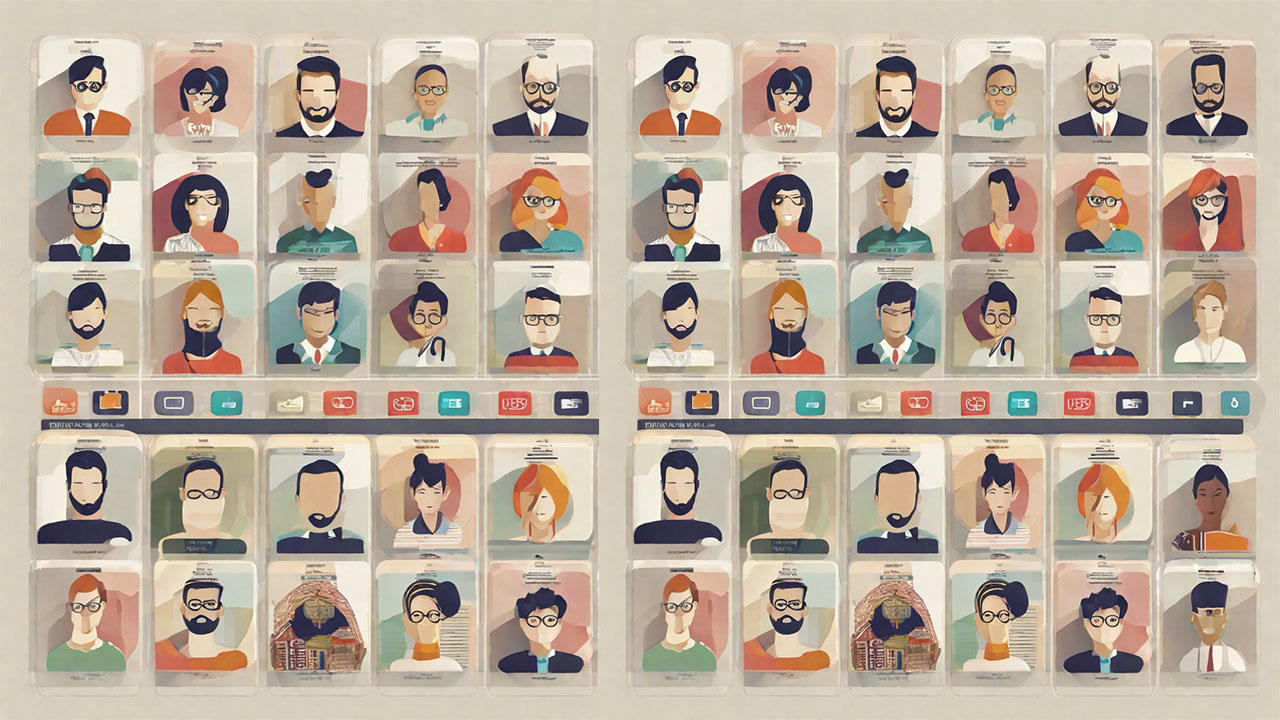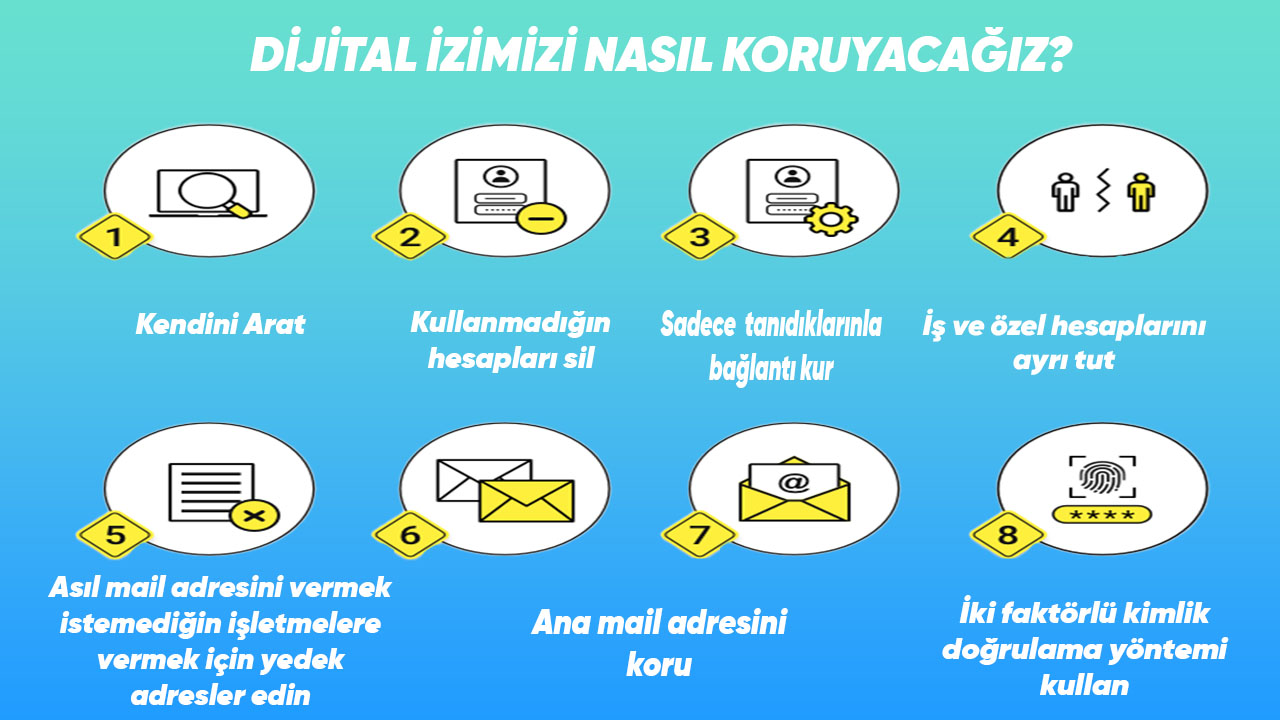Digital footprint is a trace created by all kinds of information and data we leave on the internet. You may be wondering how the digital footprint, which can be called the clues we leave about our identity, can be deleted. In this content, we have researched what internet footprint is and what it is used for. Let’s take a closer look at what digital footprint examples are, how to query them and how to delete them.
Our lives are now intertwined with the digital world. digital footprint It accumulates with every click, from sharing photos on social media to online shopping. In an environment, “They are listening to what we are talking about, I just said I need a thermos, now I keep seeing thermos ads.” Even if we make sentences like this, most of us continue to use the internet without worrying about the dimensions of this issue.
Digital footprint examples It can be summarized as a permanent record of personal information such as who we are, what we like, where we live, and more. Alright internet footprint completely why And what is it used for? In this article, how to delete digital footprint, Who can see your digital footprint We looked for answers to questions such as.
What is a digital footprint?
Imagine walking through a desert. Every step you take will leave traces of your feet behind you. Now imagine that there is someone following your footsteps behind you. Even with simple guesses, this person can guess what your average foot size is, what kind of shoes you are wearing, and even your height.
So how are the traces we leave on the internet formed? Them far from predictable. Thanks to these internet footprints, increasingly accurate predictions are made about what we might need as a consumer, from what we like or what we need.
Our digital footprint is essentially the data trail we leave behind when engaging in online activities

This includes social browsing history, media shares, searches, emails, our likes, dislikes, location data and even websites visited. We can also think of it as a virtual breadcrumb trail that showcases our online presence.
Examples of the digital footprint we leave:
- Active digital footprints
- Passive digital footprints
Everything we do, both intentionally and unintentionally, is an online digital footprint leaves. We can discuss digital footprint types under two headings as above.
Active digital footprints
- Information sharing: When you create a social media account, sign up for a newsletter, or fill out an online form, you are actively sharing personal information.
- Publishing content: When you post a comment, image or video on social media, you create a record of your online activity.
- Buying processes: When you shop online, you give your payment information to a third-party company.
These are records of your actions with your digital identity, such as social media posts, blogs, and emails. Information you have entered consciously and your shares your active digital footprint forms part of it.
Passive digital footprints
Unintentional passive footprints, we without users’ explicit knowledge results from the data collected. For example, website cookies that track our online behavior or our browsing history recorded by browsers.
Why is the digital footprint so important?

Although it may sound harmless at first, a digital footprint can have a lasting impact on identity and privacy. When you publish your reviews and opinions online, the websites or companies you interact with identify your interests, political beliefs, and social views. to create your digital profile can also be used.
On the one hand, our digital footprints can be used to connect with friends, learn new things, and even find a job. On the other hand, targeting us with advertisements, tracking our movements and they can even be used to steal our identities. For this reason, making the most of the digital footprints we inevitably leave behind at some point is not about constantly leaving our information traces or avoiding them altogether, but about striking the balance correctly.
As with everything, there are some advantages and disadvantages! Let’s look at the good and bad aspects of the digital footprint:

Pros of digital footprint:
- Fraudulent activities can be tracked using digital footprints.
- Companies can recommend products to users based on customers’ preferences.
- Personalization.
- Convenience of quick recall of stored information.
- Recruiters can find the right candidates for job positions using their digital footprints.
Cons of digital footprint:
- It could potentially lead to identity or data theft.
- Digital footprints are often indelible and permanent.
- Loss of privacy.
- Unsolicited requests/communications.
Have you tried searching yourself on Google? I wonder what comments you left on which site, dating back to fi date? There is a high probability that you may even come across your old profile picture from your high school period that you have completely forgotten!
How to delete a digital footprint? Although there is no concrete answer to this, there are ways to reduce it:

- Review and edit privacy settings.
- Delete accounts you don’t use.
- Track and control your online presence.
- Use special browsing modes.
- Clear browser cookies and cache regularly.
- Opting out from data collection
- Check your online accounts regularly
- Update and optimize your online profiles
There are traces of every digital activity of ours, large or small. In other words, deleting the digital footprint or tIt is not possible to completely destroy. However, we can reduce any possible risk with the steps we mentioned above.
Review and adjust your privacy settings
Whereas social media You can start by checking your accounts. Your privacy settings Limit who can view your profile, posts, and personal information according to your preferences by editing. After making these adjustments, update these settings regularly to adapt to your changing preferences.
Delete accounts you don’t use
that you no longer use or need You may consider closing accounts. Every account you have is a potential source of data collection. By eliminating unused accounts, you reduce your digital footprint.
Manage your online presence
Be careful about the content you share online. The less information, the fainter the footprint we can say. Think twice before sharing your personal information. Take the time to regularly review the privacy settings and security features of your online accounts. Make sure you are aware of the data collected and have control over who can access it.
Use special browsing modes
Use your browser’s private or incognito mode when making sensitive searches or accessing personal accounts. This, your search history and prevents your login information from being stored.
Opting out from data collection
Many online services offer the option to opt out of data collection for advertising purposes. Review the privacy settings of websites you frequently visit and adjust your preferences accordingly.
Clear browser cookies and cache regularly

Cookies and cached data can contribute to a significant portion of your digital footprint. Clear your browser’s cookies and cache regularly to reduce the amount of data stored about your online activities.
Update and optimize your online profiles
Keep your online profiles updated with accurate and relevant information. Optimize your profiles to highlight your achievements and contributions.
As a result, we live in a world where our online and offline lives are increasingly intertwined.What is a digital footprint? Understanding, questioning and managing are more important than ever. Although it is difficult to delete completely, Who has internet footprint? Taking some steps to control information such as what you can see can go a long way in protecting our privacy.
Speaking of data security, you may also want to take a look at these topics:
RELATED NEWS
Don’t Lose the Money While Trying to Snatch It: We’ve Explained the Scam Methods That People Fall For Most Lately!
RELATED NEWS
10 Ways to Make Your Home Wi-Fi Network More Secure
RELATED NEWS
